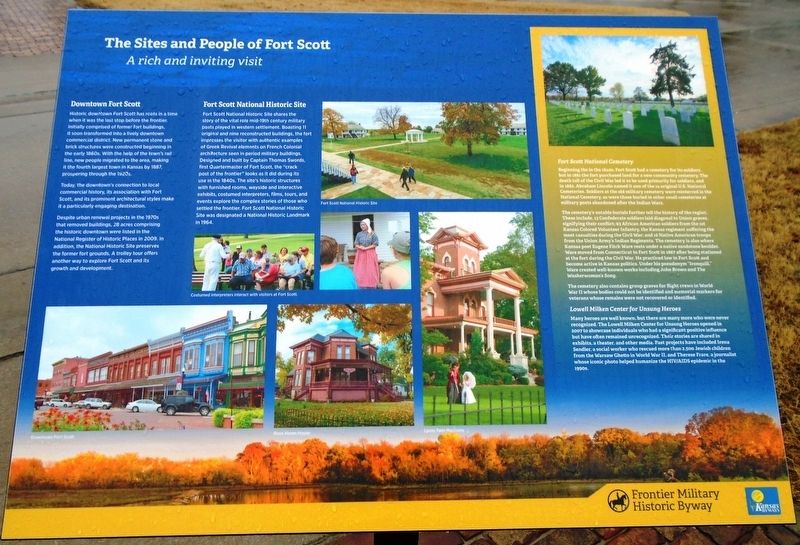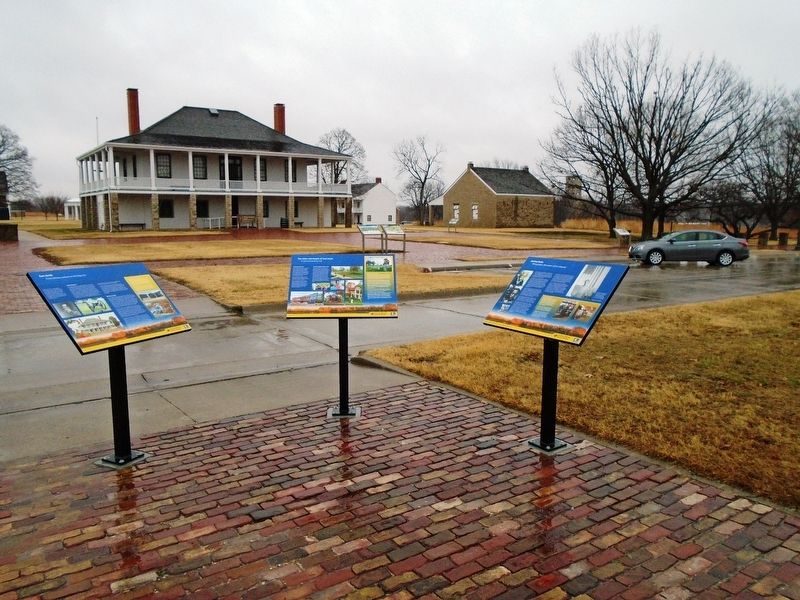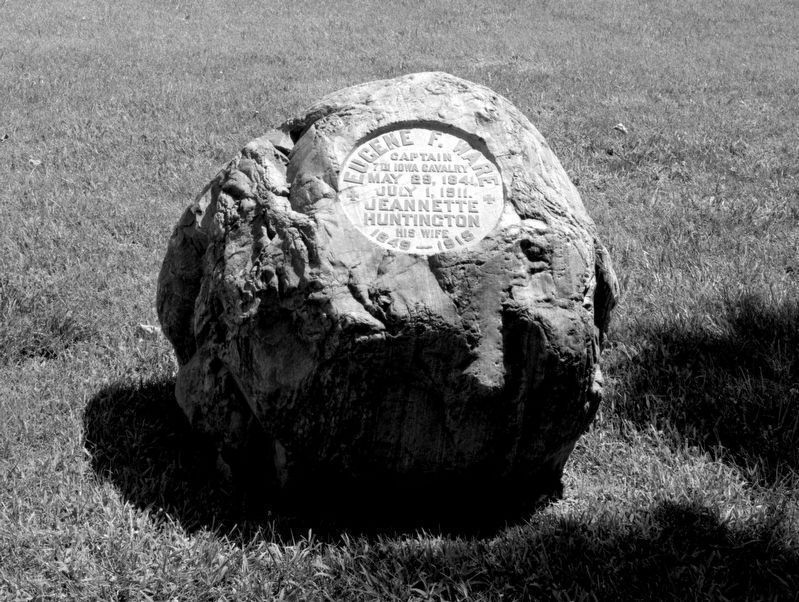The Sites and People of Fort Scott
A rich and inviting visit
Downtown Fort Scott
Historic downtown Fort Scott has roots in a time when it was the last stop before the frontier. Initially comprised of former fort buildings, it soon transformed into a lively downtown commercial district. New permanent stone and brick structures were constructed beginning in the early 1860s. With the help of the town's rail line, new people migrated to the area, making it the fourth largest town in Kansas by 1887, prospering through the 1920s.
Today, the downtown's connection to local commercial history, its association with Fort Scott [National Historic Site], and its prominent architectural styles make it a particularly engaging destination.
Despite urban renewal projects in the 1970s that removed buildings, 28 acres comprising the historic downtown were listed in the National Register of Historic Places in 2009. In addition, the National Historic Site preserves the former fort grounds. A trolley tour offers another way to explore Fort Scott and its growth and development.
Fort Scott National Historic Site
Fort Scott National Historic Site shares the story of the vital role mid-19th century military posts played in western settlement. Boasting 11 original and nine reconstructed buildings, the fort impresses the visitor with authentic examples of Greek Revival elements on
French Colonial architecture seen in period military buildings. Designed and built by Captain Thomas Swords, first Quartermaster of Fort Scott, the "crack post of the frontier" looks as it did during its use in the 1840s. The site's historic structures with furnished rooms, wayside and interactive exhibits, costumed interpreters, films, tours, and events explore the complex stories of those who settled the frontier. Fort Scott National Historic Site was designated a National Historic Landmark in 1964.Fort Scott National Cemetery
Beginning the [sic] in the 1840s, Fort Scott had a cemetery for its soldiers, but in 1861 the fort [sic - a "fort" did not exist after 1855 - "the government"] purchased land for a new community cemetery. The death toll of the Civil War led it to be used primarily for soldiers, and in 1862, Abraham Lincoln named it one of the 14 original U.S. National Cemeteries. Soldiers at the old military cemetery were reinterred in the National Cemetery, as were those buried in other small cemeteries at military posts abandoned after the Indian Wars.
The cemetery's notable burials further tell the history of the region. These include, 13 Confederate soldiers laid diagonal to Union graves, signifying their conflict; 63 African American soldiers from the 1st Kansas Colored Volunteer Infantry, the Kansas regiment suffering the most casualties
The cemetery also contains group graves for flight crews in World War II whose bodies could not be identified and memorial markers for veterans whose remains were not recovered or identified.
Lowell Milken Center for Unsung Heroes
Many heroes are well known, but there are many more who were never recognized. The Lowell Milken Center for Unsung Heroes opened in 2007 to showcase individuals who had a significant positive influence but have often remained unrecognized. Their stories are shared in exhibits, a theater, and other media. Past projects have included Irena Sendler, a social worker who rescued more than 2,500 Jewish children from the Warsaw Ghetto in World War II, and Therese Frare, a journalist whose iconic photo helped humanize the HIV/AIDS epidemic in the 1990s.
[Photo captions, clockwise from top center, read]
• [National Cemetery]
• Lyons Twin Mansions
• Rose Haven House
• Downtown Fort Scott
• Costumed interpreters interact with visitors at Fort Scott [National Historic Site].
Erected by Frontier Military Historic Byway (Kansas Byways).
Topics and series. This historical marker is listed in these topic lists: Cemeteries & Burial Sites • Industry & Commerce • Settlements & Settlers. In addition, it is included in the National Cemeteries series list. A significant historical year for this entry is 1887.
Location. 37° 50.576′ N, 94° 42.346′ W. Marker is in Fort Scott, Kansas, in Bourbon County. Marker is at the intersection of Old Fort Boulevard and Main Street, in the median on Old Fort Boulevard. Marker is adjacent to Skubitz Plaza. Touch for map. Marker is in this post office area: Fort Scott KS 66701, United States of America. Touch for directions.
Other nearby markers. At least 8 other markers are within walking distance of this marker. Gordon Parks (here, next to this marker); Fort Scott (here, next to this marker); Fort Scott Yesterday (a few steps from this marker); Sutler Store (within shouting distance of this marker); Civil War Town (within shouting distance of this marker); Medal of Honor (within shouting distance of this marker);
Also see . . .
1. Fort Scott National Historic Site. (Submitted on January 17, 2019, by William Fischer, Jr. of Scranton, Pennsylvania.)
2. Fort Scott National Cemetery. (Submitted on January 17, 2019, by William Fischer, Jr. of Scranton, Pennsylvania.)
3. Lowell Milken Center for Unsung Heroes. (Submitted on January 17, 2019, by William Fischer, Jr. of Scranton, Pennsylvania.)
4. Fort Scott Downtown Historic District National Register Registration Form. (Submitted on January 17, 2019, by William Fischer, Jr. of Scranton, Pennsylvania.)
5. Fort Scott National Cemetery National Register Registration Form. (Submitted on January 17, 2019, by William Fischer, Jr. of Scranton, Pennsylvania.)
6. Fort Scott Historic Site National Register Nomination Form. (Submitted on January 17, 2019, by William Fischer, Jr. of Scranton, Pennsylvania.)
Credits. This page was last revised on September 6, 2020. It was originally submitted on January 17, 2019, by William Fischer, Jr. of Scranton, Pennsylvania. This page has been viewed 244 times since then and 25 times this year. Photos: 1, 2. submitted on January 17, 2019, by William Fischer, Jr. of Scranton, Pennsylvania. 3. submitted on September 5, 2020, by Allen C. Browne of Silver Spring, Maryland.


